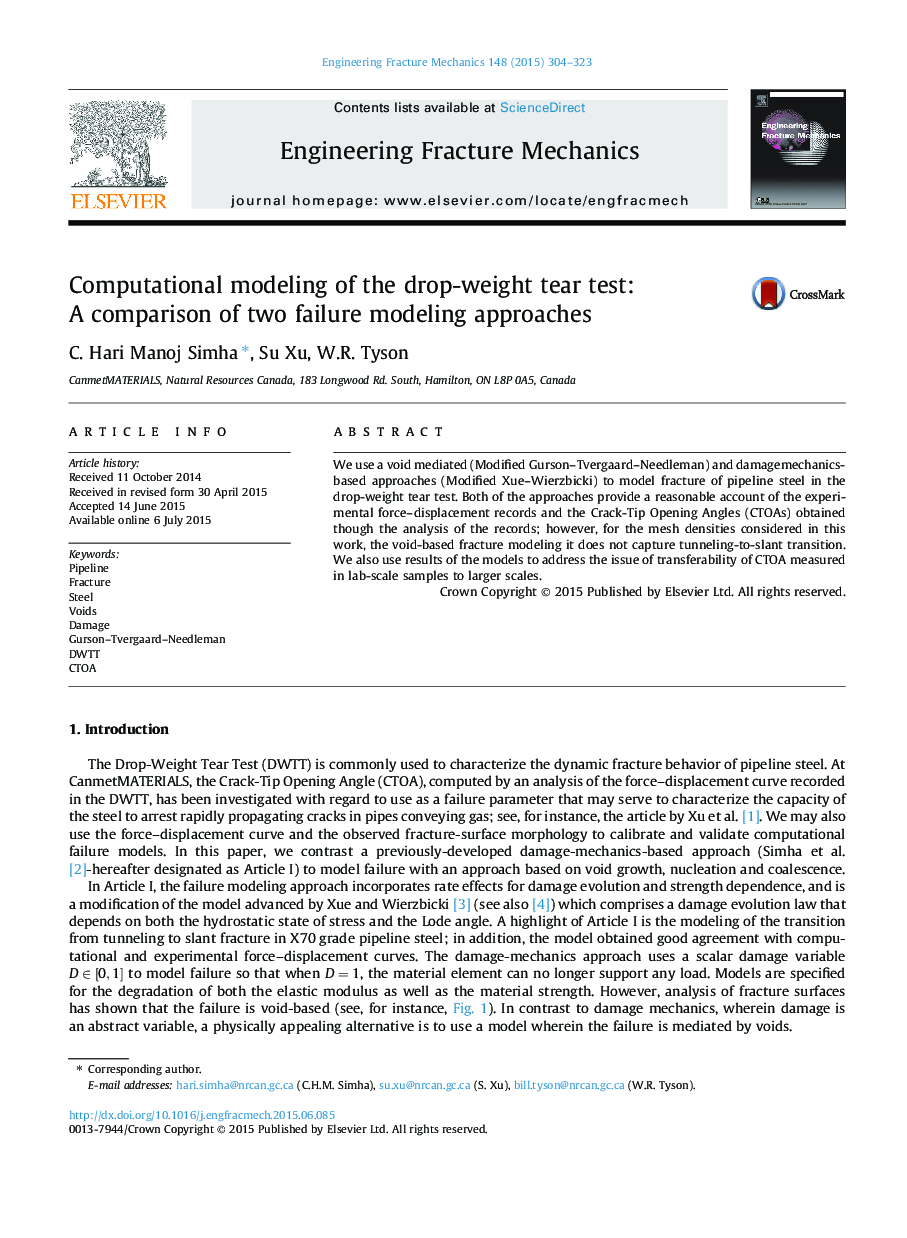| Article ID | Journal | Published Year | Pages | File Type |
|---|---|---|---|---|
| 766340 | Engineering Fracture Mechanics | 2015 | 20 Pages |
•The DWTT is modeled using GTN and damage-mechanics models.•Both models include Lode-angle dependent damage formulation.•Non-local formulation is used to mitigate mesh-dependence of results.•Transferability of model to larger scales is assessed using simulations.
We use a void mediated (Modified Gurson–Tvergaard–Needleman) and damagemechanics- based approaches (Modified Xue–Wierzbicki) to model fracture of pipeline steel in the drop-weight tear test. Both of the approaches provide a reasonable account of the experimental force–displacement records and the Crack-Tip Opening Angles (CTOAs) obtained though the analysis of the records; however, for the mesh densities considered in this work, the void-based fracture modeling it does not capture tunneling-to-slant transition. We also use results of the models to address the issue of transferability of CTOA measured in lab-scale samples to larger scales.
